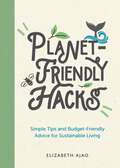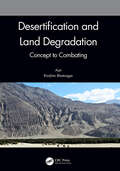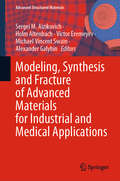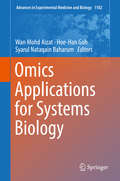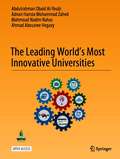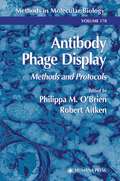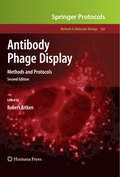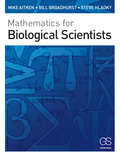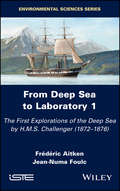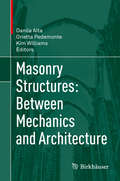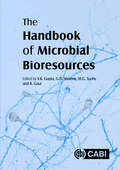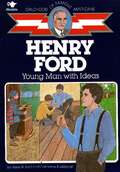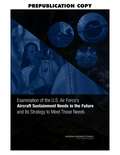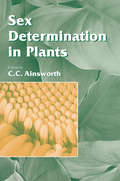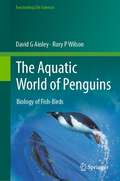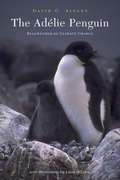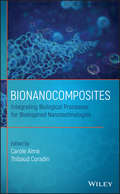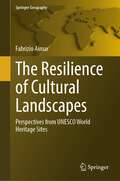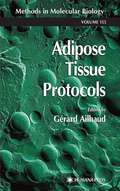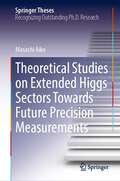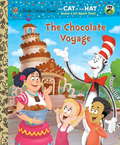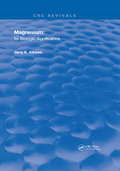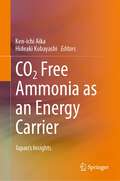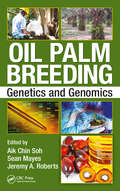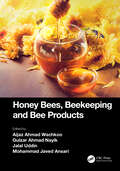- Table View
- List View
Planet-Friendly Hacks: Simple Tips and Budget-Friendly Advice for Sustainable Living
by Elizabeth AjaoThis handy guide is brimming with quick tips, life hacks and budget-friendly tricks to help you reduce your carbon footprint and live more sustainablyAn eco-friendly lifestyle is expensive and time-consuming, right? Wrong! There are countless ways to make green choices that don’t take a toll on your time, your bank balance or the planet.This book is your one-stop guide to living a more sustainable lifestyle. Whether you need tips on conserving energy or reducing food waste, or you want to give your home a makeover without impacting the planet, these pages include everything you need to get started. You will find:Clever life hacks to make reducing your carbon footprint that bit easierSimple tips to help you make planet-friendly choices in everyday lifeSmart advice for eco-living on a budgetInspiration for eco-friendly crafts and DIY projectsIt’s more important than ever to do our bit for the environment, and Planet-Friendly Hacks will help you live life to the full without costing the earth.
Desertification and Land Degradation: Concept to Combating
by Ajai Rimjhim BhatnagarDesertification and land degradation are complex phenomena, and we need to understand their causes, consequences, and means to mitigate and combat their impact. Therefore, this book aims to explain the concept and characteristics of drylands, desert and desertification, land degradation, wastelands, and the concept of ecosystem services. It also discusses various types of processes of land degradations, their characteristics, physics and indicators along with mapping, monitoring and assessment of methods involved. Concept of Ocean Biological Deserts is discussed along with international and regional efforts towards combating land degradation and desertification. Key Features:• Provides all the aspect of desertification and land degradation at one place • Includes comprehensive methods to monitor different desertification/land degradation processes • Comprehensive overview of the mapping, monitoring and modelling techniques • Role of space borne data in identifying, monitoring and combating desertification is evaluated and reported with real case studies • Explains the concept of ocean biological deserts, their characteristics and mapping
Modeling, Synthesis and Fracture of Advanced Materials for Industrial and Medical Applications (Advanced Structured Materials #136)
by Sergei M. Aizikovich Holm Altenbach Victor Eremeyev Michael Vincent Swain Alexander GalybinThis book gathers papers presented at the international workshop PMSDAM’19. The respective contributions offer valuable insights for researchers working on numerical solutions to advanced materials problems. The problems concerning the remineralization of teeth are considered. Of particular interest are articles exploring topics at the interface of different disciplines.
Omics Applications for Systems Biology (Advances in Experimental Medicine and Biology #1102)
by Wan Mohd Aizat Hoe-Han Goh Syarul Nataqain BaharumThis book explains omics at the most basic level, including how this new concept can be properly utilized in molecular and systems biology research. Most reviews and books on this topic have mainly focused on the technicalities and complexity of each omics’ platform, impeding readers to wholly understand its fundamentals and applications. This book tackles such gap and will be most beneficial to novice in this area, university students and even researchers. Basic workflow and practical guidance in each omics are also described, such that scientists can properly design their experimentation effectively. Furthermore, how each omics platform has been conducted in our institute (INBIOSIS) is also detailed, a comprehensive example on this topic to further enhance readers’ understanding. The contributors of each chapter have utilized the platforms in various manner within their own research and beyond. The contributors have also been interactively integrated and combined these different omics approaches in their research, being able to systematically write each chapter with the conscious knowledge of other inter-relating topics of omics. The potential readers and audience of this book can come from undergraduate and postgraduate students who wish to extend their comprehension in the topics of molecular biology and big data analysis using omics platforms. Furthermore, researchers and scientists whom may have expertise in basic molecular biology can extend their experimentation using the omics technologies and workflow outlined in this book, benefiting their research in the long run.
The Leading World’s Most Innovative Universities
by Abdulrahman Obaid AI-Youbi Adnan Hamza Zahed Mahmoud Nadim Nahas Ahmad Abousree HegazyThis open access book is unique in its contents. No other title in the book market has tackled this important subject. It introduces innovation as a way of practice for world-class universities. It, then, discusses the criteria for being innovative in the academic world. The book selects some of the top innovative world-class universities to study the factors that qualified them to be innovative, so that any other university can follow their steps to become innovative. The final chapter of the book presents some recommendations in this regard.
Antibody Phage Display: Methods and Protocols (Methods in Molecular Biology #178)
by Robert Aitken Philippa M. O’brienThis comprehensive collection of established antibody phage display protocols features authoritative guidance that will enable the nonspecialist successfully to carry them out. Coverage spans the construction of antibody libraries, the selection of antibody clones with the desired properties, and their modification, expression, and purification. Comprehensive and highly practical, Antibody Phage Display: Methods and Protocols provides biochemists, molecular biologists, and immunologists with a gold-standard reference guide to the successful isolation, modification, and expression of recombinant antibodies using today's powerful phage display technology.
Antibody Phage Display: Methods and Protocols (Methods in Molecular Biology #562)
by Robert AitkenSince its introduction almost 20 years ago, phage display technology has revolutionized approaches to the analysis of biomedical problems, quickly impacting the fields of immunology, cell biology, biotechnology, pharmacology, and drug discovery. In Antibody Phage Display: Methods and Protocols, Second Edition, expert researchers explore the latest in this cutting-edge technology, providing an invaluable resource that will guide readers in the design and execution of experiments based around antibody phage display. Chapters present a wide range of methods of isolating recombinant antibodies from phage display libraries, examine how the targets recognized by antibodies of interest can be identified, discuss the identification and exploitation of antibodies that can enter cells and bind to cytosolic targets, and include novel approaches to the expression of recombinant antibodies. Composed in the highly successful Methods in Molecular BiologyTM series format, each chapter contains a brief introduction, step-by-step methods, a list of necessary materials, and a Notes section which shares tips on troubleshooting and avoiding known pitfalls. Detailed and innovative, Antibody Phage Display: Methods and Protocols, Second Edition is a critical handbook on phage display technology which is certain to stimulate the reader's imagination as much as it will guide future practice in the laboratory.
Mathematics for Biological Scientists
by Mike Aitken Bill Broadhurst Stephen HladkyMathematics for Biological Scientists is a new undergraduate textbook which covers the mathematics necessary for biology students to understand, interpret and discuss biological questions.The book's twelve chapters are organized into four themes. The first theme covers the basic concepts of mathematics in biology, discussing the mathematics used in biological quantities, processes and structures. The second theme, calculus, extends the language of mathematics to describe change. The third theme is probability and statistics, where the uncertainty and variation encountered in real biological data is described. The fourth theme is explored briefly in the final chapter of the book, which is to show how the 'tools' developed in the first few chapters are used within biology to develop models of biological processes.Mathematics for Biological Scientists fully integrates mathematics and biology with the use of colour illustrations and photographs to provide an engaging and informative approach to the subject of mathematics and statistics within biological science.
From Deep Sea to Laboratory 1: The First Explorations of the Deep Sea by H.M.S. Challenger (1872-1876)
by Frederic Aitken Jean-Numa FoulcThe scientific expedition of H.M.S. Challenger in the 1870s marks the starting point of physical oceanography. This ship traveled the seas of the globe pursuing a dual objective: to conduct an in-depth study of animal life and to observe the physical properties of ocean waters. Volume 1, richly illustrated, relates the expedition of the Challenger and addresses the problems of measuring the great depths. A theoretical approach to the immersion velocity of a probe is also proposed, as well as a presentation of some results of bathymetric surveys and physical observations made by the Challenger scientists. From Deep Sea to Laboratory is available in three volumes for curious readers drawn to travel, history and science. Students, researchers and teachers of physics, fluid mechanics and oceanography will find material to deepen their knowledge.
Masonry Structures: Between Mechanics and Architecture
by Danila Aita Orietta Pedemonte Kim WilliamsThe book aims to provide an overview of the state of the art on the mechanics of arches and masonry structures. It is addressed to an international audience, arising from the international context in which the Associazione Edoardo Benvenuto has carried out its activities in recent years, under the honorary presidency of Jacques Heyman. The book belongs to the collection Between Mechanics and Architecture, born in 1995 from the collaboration of several renowned scholars, including Edoardo Benvenuto (P. Radelet-de Grave, E. Benvenuto (eds. ), Entre Mécanique et Architecture / Between Mechanics and Architecture, Birkhäuser, Basel 1995).
The Handbook of Microbial Bioresources
by Alfredo Aires Harikesh Bahadur Singh Vijai Kumar Gupta Vinod Singh Helen Treichel Pattanathu K.S.M. Rahman Jose López-Bucio Ram Naraian Quang D. Nguyen Christian Cumagun Gauri Dutt Sharma Hesham A. El Enshasy R. S. Upadhyay Ipek Kurtböke Javed Ahamad Khan Hector Cristóbal Igor Maksimov Maria G Tuohy Sandipan Ganguly María-del-Carmen Durán-Domínguez-de-Bazúa M Neela Badrie Franciele M. Pelissari M. A. Mazutii Marina G. Holyavka Kanika Sharma Mark Eppinger Iqbal Ahmad Rajeeva Gaur Javier Hernández-Fernández Aakash Goyal Bishnu Maya Marcela Panago Ahmed M. El-Bondkly Gerardo Díaz Godínez Marcela Pagano Smriti Gaur Ravichandra Potumarthi Gustavo Molina Pradeep Kumar Shikha Shikha Gamini Seneviratne Jeyabalan Sangeetha Mohammed Kuddus S Chandra Nayak Thais Martins CostaMicrobial technology plays an integral role in the biotechnology, bioengineering, biomedicine/biopharmaceuticals and agriculture sector. This book provides a detailed compendium of the methods, biotechnological routes, and processes used to investigate different aspects of microbial resources and applications. It covers the fundamental and applied aspects of microorganisms in the health, industry, agriculture and environmental sectors, reviewing subjects as varied and topical as pest control, health and industrial developments and animal feed.
Henry Ford: Young Man with Ideas (Childhood of Famous Americans Series)
by Hazel B. Aird Catherine RuddimanA fictionalized biography of the early life of the American automotive industrialist who founded the Ford Motor Company and pioneered in assembly-line methods of mass production.
Examination of the U.S. Air Force's Aircraft Sustainment Needs in the Future and Its Strategy to Meet Those Needs
by Air Force Studies BoardThe ability of the United States Air Force (USAF) to keep its aircraft operating at an acceptable operational tempo, in wartime and in peacetime, has been important to the Air Force since its inception. This is a much larger issue for the Air Force today, having effectively been at war for 20 years, with its aircraft becoming increasingly more expensive to operate and maintain and with military budgets certain to further decrease. The enormously complex Air Force weapon system sustainment enterprise is currently constrained on many sides by laws, policies, regulations and procedures, relationships, and organizational issues emanating from Congress, the Department of Defense (DoD), and the Air Force itself. Against the back-drop of these stark realities, the Air Force requested the National Research Council (NRC) of the National Academies, under the auspices of the Air Force Studies Board to conduct and in-depth assessment of current and future Air Force weapon system sustainment initiatives and recommended future courses of action for consideration by the Air Force. Examination of the U. S. Air Force's Aircraft Sustainment Needs in the Future and Its Strategy to Meet Those Needs addresses the following topics: Assess current sustainment investments, infrastructure, and processes for adequacy in sustaining aging legacy systems and their support equipment. Determine if any modifications in policy are required and, if so, identify them and make recommendations for changes in Air Force regulations, policies, and strategies to accomplish the sustainment goals of the Air Force. Determine if any modifications in technology efforts are required and, if so, identify them and make recommendations regarding the technology efforts that should be pursued because they could make positive impacts on the sustainment of the current and future systems and equipment of the Air Force. Determine if the Air Logistics Centers have the necessary resources (funding, manpower, skill sets, and technologies) and are equipped and organized to sustain legacy systems and equipment and the Air Force of tomorrow. Identify and make recommendations regarding incorporating sustainability into future aircraft designs.
Sex Determination in Plants (Society for Experimental Biology)
by C. C. AinsworthIndispensable for all plant biologists, this is a fascinating and thorough examination of those factors which affect the sex determination of plant species, describing all of the main classes of plant with unisexual flowers hermaphrodite, monoecious and
The Aquatic World of Penguins: Biology of Fish-Birds (Fascinating Life Sciences)
by David G Ainley Rory P WilsonCenturies ago, when penguins were first encountered by European explorers, they were not thought to be birds but rather a fish-like relative. Subsequent accumulation of knowledge has shown penguins to be an avian species with unrivaled aquatic attributes, owing to a number of evolutionary adaptations: shape change, low drag, ability to regulate buoyancy, and extraordinary surface compliancy from their featheration. They are indeed the most extremely specialized diving bird, having given up flight (which otherwise is hugely advantageous) to the benefit of underwater prowess (such as speed, maneuverability and an ability to exploit an extraordinary range of depths). This flightlessness, however, also comes with costs that are substantial for a seabird (such as the inability to cover large distances quickly in reaction to ephemeral prey); and the energy needed to cope with moving through an aqueous environment, which is more resistant than air. For penguins, the high energetic costs in exploiting the ocean environment thus makes them especially sensitive to changes in food availability or their access to their prey. While a number of “penguin books” cover the natural history, mainly of breeding aspects, few address in much detail the incredible aquatic nature of these creatures. A huge amount of information has been amassed over recent past decades thanks to dramatic advances in microelectronics, bio-logging and maturation of some long-term studies of penguin life history. This work represents an integration of all these data with charts, maps and graphs, along with richly illustrated photos by experts in the field.
The Adélie Penguin: Bellwether of Climate Change
by David AinleyThe Adélie penguin is one of the best-studied birds in the world and is the subject of research programs from a dozen nations interested in monitoring changes in the environment and the food webs of the Southern Ocean. This species' population has been changing dramatically over the past few decades coincident with a general warming of the maritime portion of Antarctica. When the sea-ice is seen to decline so does the population of Adélie penguins. Further south, however, the population is increasing. This book summarizes our present ecological knowledge of this polar seabird. In so doing, David Ainley describes the ecological factors important to its life history and details the mechanisms by which it is responding to climate change. The author also chronicles the history of research on Adélie penguins, beginning with the heroic expeditions at the beginning of the twentieth century. Weaving together history, ecology, natural history, and written accounts from the earliest Antarctic naturalists into a fascinating account of this charismatic bird, The Adélie Penguin provides a foundation upon which future ornithological research and environmental monitoring can be based. It is a model for investigations into the effect of climate change on a particular species. The book also contains many fine illustrations from the accomplished illustrator Lucia deLeiris and photographs by the author.
Bionanocomposites: Integrating Biological Processes for Bioinspired Nanotechnologies
by Carole Aimé Thibaud CoradinBeginning with a general overview of nanocomposites, Bionanocomposites: Integrating Biological Processes for Bio-inspired Nanotechnologies details the systems available in nature (nucleic acids, proteins, carbohydrates, lipids) that can be integrated within suitable inorganic matrices for specific applications. Describing the relationship between architecture, hierarchy and function, this book aims at pointing out how bio-systems can be key components of nanocomposites. The text then reviews the design principles, structures, functions and applications of bionanocomposites. It also includes a section presenting related technical methods to help readers identify and understand the most widely used analytical tools such as mass spectrometry, calorimetry, and impedance spectroscopy, among others.
The Resilience of Cultural Landscapes: Perspectives from UNESCO World Heritage Sites (Springer Geography)
by Fabrizio AimarThis book explores the possibility of building the resilience of the UNESCO cultural landscapes, both using theoretical conceptions and practical strategies and actions. Two case studies have been selected, one in Italy and one in China, which have then been explored for the first time in such a comparative way. Different notions of landscape, as well as the driving force of changes affecting these landscapes, are examined and compared. Moreover, the perceptions of the local communities regarding these landscapes are examined, using online questionnaires with over 400 participants. This research highlights the need for an integrated management system, building stronger rural communities able to manage change and continuity. Five pillars to build the resilience of these landscapes have been provided, with schemes and figures, requiring a people-centered approach in their management. This book demonstrates strong connections between identity and landscape resilience, especially in inlandareas where the sense of identity is most prominent. Furthermore, it is structured to make it possible to replicate this investigation in ordinary case studies, i.e. ordinary landscapes. Scholars and professionals interested in cultural landscapes and heritage conservation are target of this book, as well as site managers.
Adipose Tissue Protocols (Methods in Molecular Biology #155)
by Gérard AilhaudGérard Ailhaud and a team of laboratory experts and clinicians describe in step-by-step detail the major techniques needed for the study of adipose tissue and cells. Drawn from both in vivo and in vitro studies, these readily reproducible methods cover a broad range of techniques, including the choice of adipose tissue depot and of morphological techniques for work on both brown adipose tissue (BAT) and white adipose tissue (WAT). Major treatment is accorded to the isolation, subcellular fractionation, and transfection of low density adipocytes as well as metabolic aspects of nutrient uptake and assays of nutrient and ion fluxes. Innovative and highly practical, Adipose Tissue Protocols offers endocrinologists, physiologists, cell biologists, and pharmacologists a gold-standard collection of proven methods for effective research on adipose tissue from the nutritional to the physiological and the molecular levels.
Theoretical Studies on Extended Higgs Sectors Towards Future Precision Measurements (Springer Theses)
by Masashi AikoThis book investigates the physics of the discovered Higgs boson and additional Higgs bosons in the extended Higgs models which includes higher-order quantum corrections. While the 125 GeV Higgs boson was discovered, the structure of the Higgs sector is still a mystery. Since the Higgs sector determines the concrete realization of the Higgs mechanism, the study of its nature is one of the central interests in current and future high-energy physics. The book begins with a review of the standard model and the two-Higgs doublet model, which is one of the representatives of the extended Higgs models. Subsequently, we discuss the studies of the two-Higgs doublet model at the lowest order of perturbation. Following the lowest-order analysis, we study the higher-order electroweak corrections in Higgs physics. After reviewing the renormalization procedure and the higher-order corrections in the decays of the discovered Higgs boson, we discuss the higher-order corrections in the Higgs strahlung process from an electron-positron collision, the decays of the additional charged and CP-odd Higgs bosons in the two-Higgs doublet model. From the series of these studies, it is found that the nature of the Higgs sector can be widely investigated by future collider experiments.
The Chocolate Voyage (Little Golden Book)
by Dave Aikins Tish RabeWhen the Cat in the Hat eats Nick's last piece of chocolate, the gang visits the Forest of Coco-a-licious to learn to make their own. There they discover that chocolate is made from cocoa beans which grow on trees--and that the raw beans actually taste pretty awful! Undeterred, the gang help harvest, dry, and roast the beans, separate the cocoa butter and liquids, and cook the mixture with sugar to make the sweet confection we all know and love. A perfectly tasty read for any time of the year, The Chocolate Voyage is ideal for Christmas, Valentine's Day, Easter, Halloween--any time chocolate is on the menu! Fans of the hit PBS Kids' television show The Cat in the Hat Know a Lot About That! will gobble this one up!
Magnesium: It's Biologic Significance (Routledge Revivals)
by Jerry K. AikawaFirst Published in 1981, this book offers a full, comprehensive guide into the aspects of magnesium and its effect on our bodies, ecosystem, and much more. Carefully compiled and filled with a vast repertoire of notes and references this book is a useful reference for Dieticians, Physicians, and Students in their respective fields.
CO2 Free Ammonia as an Energy Carrier: Japan's Insights
by Ken-Ichi Aika Hideaki KobayashiThis book describes important findings in intensive studies conducted in Japan on ammonia as an energy carrier. It illustrates an advanced solar-heat capture system and storage materials at 600°C and hydrogen production with SOECs and a new IS method through the use of heat. New industrial ammonia catalysts and a demonstration process that started running in Fukushima are also introduced. Advanced ammonia decomposition catalysts and the process that were developed for use by the hydrogen station are presented. An advanced direct ammonia fuel cell was developed and the base data are shown. The book explains that ammonia is used as a fuel for industrial applications because its burning can be controlled without emitting extra NOx in the gas turbine and the real coal co-fired power plant. These breakthroughs have made a strong impact in the world as a practical technology for CO2 reduction. Also provided here are the scientific and industrial backgrounds as well as the environmental assessment and economic evaluation for the future.This book will be helpful for all who are interested in energy technology—researchers, students, and strategy planners at companies and in the government.
Oil Palm Breeding: Genetics and Genomics
by Aik Chin Soh, Sean Mayes, and Jeremy RobertsThe oil palm is a remarkable crop, producing around 40% of the world’s vegetable oil from around 6% of the land devoted to oil crops. Conventional breeding has clearly been the major focus of genetic improvement in this crop. A mix of improved agronomy and management, coupled with breeding selection have quadrupled the oil yield of the crop since breeding began in earnest in the 1920s. However, as for all perennial crops with long breeding cycles, oil palm faces immense challenges in the coming years with increased pressure from population growth, climate change and the need to develop environmentally sustainable oil palm plantations. In Oil Palm: Breeding, Genetics and Genomics, world leading organizations and individuals who have been at the forefront of developments in this crop, provide their insights and experiences of oil palm research, while examining the different challenges that face the future of the oil palm. The editors have all been involved in research and breeding of oil palm for many years and use their knowledge of the crop and their disciplinary expertise to provide context and to introduce the different research topics covered.
Honey Bees, Beekeeping and Bee Products
by Aijaz Ahmad Wachkoo, Gulzar Ahmad Nayik, Jalal Uddin and Mohammad Javed AnsariHoney bees are social insects; they live together in large, well-organized family groups comprising three castes: queen (fertile female), workers (sterile females) and drones (males). During honey flow season, there is a considerable increase in the foraging activity of the workers and in the rate of egg laying by the queen. Sex determination in honey bees involves a multi-allelic locus, such that homozygotes develop as males and heterozygotes as females, whereas diet quality influences the caste determination in honey bees. Like all living organisms, honey bees can be infested with diseases and pests. Some of these are more deleterious to bee colonies than others, but it is important for the beekeeper to be able to recognize conditions that might be disease or pest-related and respond accordingly so as to improve the quality of honey and honey bee by-products.The best-known primary products of beekeeping are honey and wax, but pollen, propolis, royal jelly, venom, queens, bees and their larvae are also marketable primary bee products. The purpose of this book is to make available information on bee biology and beekeeping as well as to provide comprehensive information on manufacturing, processing and marketing of value-added bee products.This book has been designed as a useful tool for the many diverse professionals who characterize and market honey bee products, including beekeepers, non-beekeepers, small entrepreneurs, extension officers and those involved in small business development. This edited book will be the first of its kind to contain comprehensive information on both bees and bee products.Key Features: Contains comprehensive information on beekeeping. Discusses the recent advances in beekeeping. Sheds light on bee colony integration and organization. Contains brief information on honey bee products.
